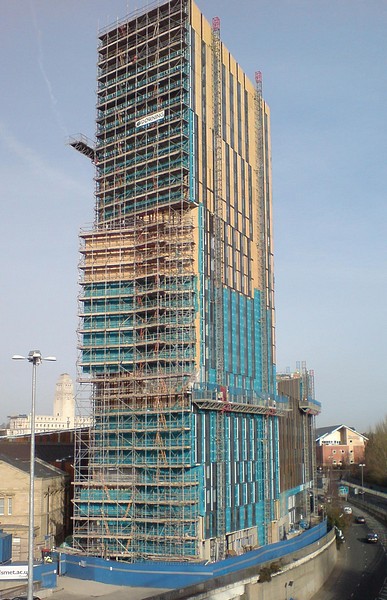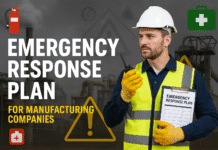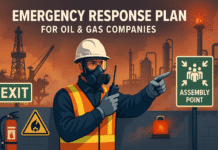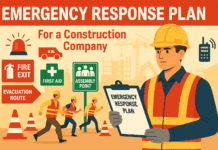
Introduction
Work at Height Questions and Answers : Work at height is an integral part of many industries, including construction, maintenance, and rescue operations. While it is necessary for certain tasks, it also comes with inherent risks and dangers. Therefore, it is crucial to address any technical questions related to working at height to ensure the safety of workers and prevent potential accidents. This article aims to provide a comprehensive overview of the essential aspects of working at height, including safety measures, hazard identification, safety training, equipment selection, and emergency preparedness.
Work at Height Questions and Answers : Ensuring Safety and Efficiency
Understanding Work at Height
Working at height refers to any task performed above ground level, where there is a risk of falling that can cause injury or even death. These tasks may involve working on rooftops, scaffolds, ladders, elevated platforms, or in confined spaces.
Importance of Following Safety Measures
Safety should always be the top priority when working at height. Adhering to strict safety measures can significantly reduce the likelihood of accidents and injuries. Moreover, it ensures compliance with legal regulations and promotes a culture of safety within the workplace.
Common Technical Questions About Working at Height
4.1 What are the necessary qualifications for working at height?
Before working at height, individuals must undergo specialized training to understand the potential risks and learn the proper safety procedures. Additionally, employers may require workers to possess relevant certifications for specific tasks.
4.2 What safety equipment is required for working at height?
Fall protection systems are essential for working at height. This includes harnesses, guardrails, safety nets, and anchor points, all of which must comply with safety standards.
4.3 How can workers prevent falls while working at height?
Workers must take precautions such as using safety harnesses properly, installing guardrails, and staying aware of their surroundings. Regular risk assessments can also help identify potential hazards.
4.4 Are there any weight restrictions for working at height?
Weight restrictions may apply to certain equipment, such as ladders and scaffolding. It is crucial to adhere to these restrictions to ensure stability and safety.
4.5 What are the legal regulations for working at height?
Legal regulations vary depending on the jurisdiction, but they generally outline the responsibilities of employers, the required safety equipment, and the training workers need to undergo.
Identifying Potential Hazards
Before undertaking any work at height, it is essential to conduct a thorough risk assessment to identify potential hazards that may compromise safety. Some key factors to consider include:
5.1 Assessing the work environment
Evaluating the work environment involves identifying potential obstacles, unstable surfaces, or any hazards that might cause a fall.
5.2 Weather conditions and their impact
Weather conditions can greatly affect safety when working at height. Rain, wind, or icy conditions can create slippery surfaces and increase the risk of accidents.
5.3 Proper ladder usage
Using ladders safely is crucial, including ensuring they are stable, positioned correctly, and the correct type and size for the task at hand.
5.4 Scaffolding safety guidelines
When using scaffolding, it is essential to follow proper assembly procedures and ensure it is regularly inspected and maintained.
Safety Training and Certifications
6.1 Importance of specialized training
Proper training ensures that workers are knowledgeable about the specific risks associated with their tasks and are aware of the correct safety protocols.
6.2 Recognized certification programs
Various organizations offer certifications that validate a worker’s competence in working at height. These certifications are valuable in demonstrating a worker’s expertise to employers.
6.3 Receiving hands-on experience
Beyond theoretical knowledge, workers should also gain practical experience in working at height scenarios to reinforce their training.
Implementing Fall Protection Systems
7.1 Harnesses and their correct usage
Harnesses are a vital component of fall protection systems, and workers must be trained in how to wear and use them correctly.
7.2 Guardrails and safety nets
Guardrails and safety nets are passive fall protection systems that can prevent falls and minimize the risk of injuries.
7.3 Importance of anchor points
Anchor points are essential for attaching fall protection equipment securely. Ensuring their integrity is crucial for the effectiveness of the fall protection system.
7.4 Rescue plans and procedures
In the event of a fall, having a well-thought-out rescue plan is critical to ensuring a swift and safe response. Workers should be familiar with the procedures for rescuing an injured colleague and providing necessary first aid.
Selecting the Right Equipment
Choosing the appropriate equipment for working at height is vital for both safety and efficiency. Some considerations to keep in mind include:
8.1 Understanding equipment specifications
Workers should thoroughly understand the specifications of each piece of equipment, including weight capacity, maximum height, and proper usage.
8.2 Choosing appropriate tools for the job
Selecting the right tools and equipment for specific tasks ensures that workers can perform their duties effectively and safely.
Preparing for Emergencies
Anticipating and preparing for emergencies is crucial for minimizing the impact of potential accidents. Key aspects to consider include:
9.1 First aid and medical considerations
Having designated first aiders and medical supplies readily available can make a significant difference in providing immediate assistance to injured workers.
9.2 Emergency response planning
Employers must have a well-defined emergency response plan that outlines procedures for evacuating workers and summoning help in case of accidents.
Common Mistakes to Avoid
Recognizing common errors in working at height can help prevent accidents and injuries. Some mistakes to avoid include:
10.1 Ignoring safety guidelines
Complacency and disregarding safety protocols can lead to disastrous consequences. Workers should always prioritize following safety guidelines.
10.2 Improper equipment maintenance
Regular maintenance and inspection of equipment are essential for identifying potential issues that could compromise safety.
10.3 Neglecting regular risk assessments
Failing to conduct regular risk assessments may result in overlooking potential hazards and dangers.
10.4 Overconfidence and complacency
Being overconfident in one’s abilities can lead to taking unnecessary risks, which should be avoided at all costs.
The Role of Employers and Employees
Both employers and employees have significant roles in ensuring safety when working at height:
11.1 Responsibilities of employers
Employers must provide proper training, safety equipment, and a safe work environment. They should also actively promote a culture of safety and accountability.
11.2 Employee cooperation and communication
Employees should actively participate in safety training, communicate potential hazards, and follow safety guidelines.
11.3 Fostering a safety-oriented culture
A strong safety culture that encourages open communication and reporting of safety concerns can help prevent accidents.
Tips for Working at Height
To ensure a safe and productive work environment, workers should follow these practical tips:
12.1 Double-checking equipment before use
Before starting work, workers should inspect their equipment to ensure it is in proper working condition.
12.2 Being aware of surroundings
Staying alert and aware of the environment helps identify potential hazards and take appropriate precautions.
12.3 Taking regular breaks to prevent fatigue
Working at height requires focus and concentration, and taking regular breaks can help prevent fatigue and errors.
12.4 Reporting unsafe conditions
Workers should promptly report any unsafe conditions they encounter to their supervisors for immediate action.
Advancements in Work at Height Technology
The field of work at height has seen various technological advancements that enhance safety and efficiency:
13.1 Drone usage for inspections
Drones are increasingly used for inspections in hard-to-reach areas, providing valuable data without risking workers’ safety.
13.2 Virtual reality training simulations
Virtual reality simulations offer a safe and immersive way to train workers in various work at height scenarios.
13.3 Innovative fall protection gear
The development of advanced fall protection gear, such as smart harnesses and inflatable airbags, enhances worker safety.
Conclusion
Working at height is an integral part of various industries, but it comes with inherent risks that must be managed effectively. By adhering to proper safety measures, identifying potential hazards, providing comprehensive training, selecting suitable equipment, and fostering a culture of safety, employers can create a work environment where employees can carry out their tasks with confidence and without compromising their well-being.
FAQs
15.1 Can I work at height without any safety training?
No, working at height without proper safety training is extremely dangerous and against legal regulations. Workers must undergo specialized training before performing any tasks at height.
15.2 What type of harness is best for working at height?
The type of harness required depends on the specific task and the equipment being used. It is essential to choose a harness that meets safety standards and is appropriate for the job.
15.3 Is there an age restriction for working at height?
The age requirements for working at height may vary depending on local regulations and the type of work involved. However, it is generally required that workers be of legal working age and physically capable of performing the tasks safely.
15.4 How often should equipment be inspected?
Equipment used for working at height should be regularly inspected before use and as per the manufacturer’s guidelines. Additionally, any signs of wear, damage, or malfunction should be addressed immediately.
15.5 Can I reuse fall protection equipment after a fall?
No, fall protection equipment that has been subjected to a fall should be immediately removed from service and replaced. It is crucial to ensure that the equipment is in optimal condition to provide the necessary protection in case of future accidents.
























